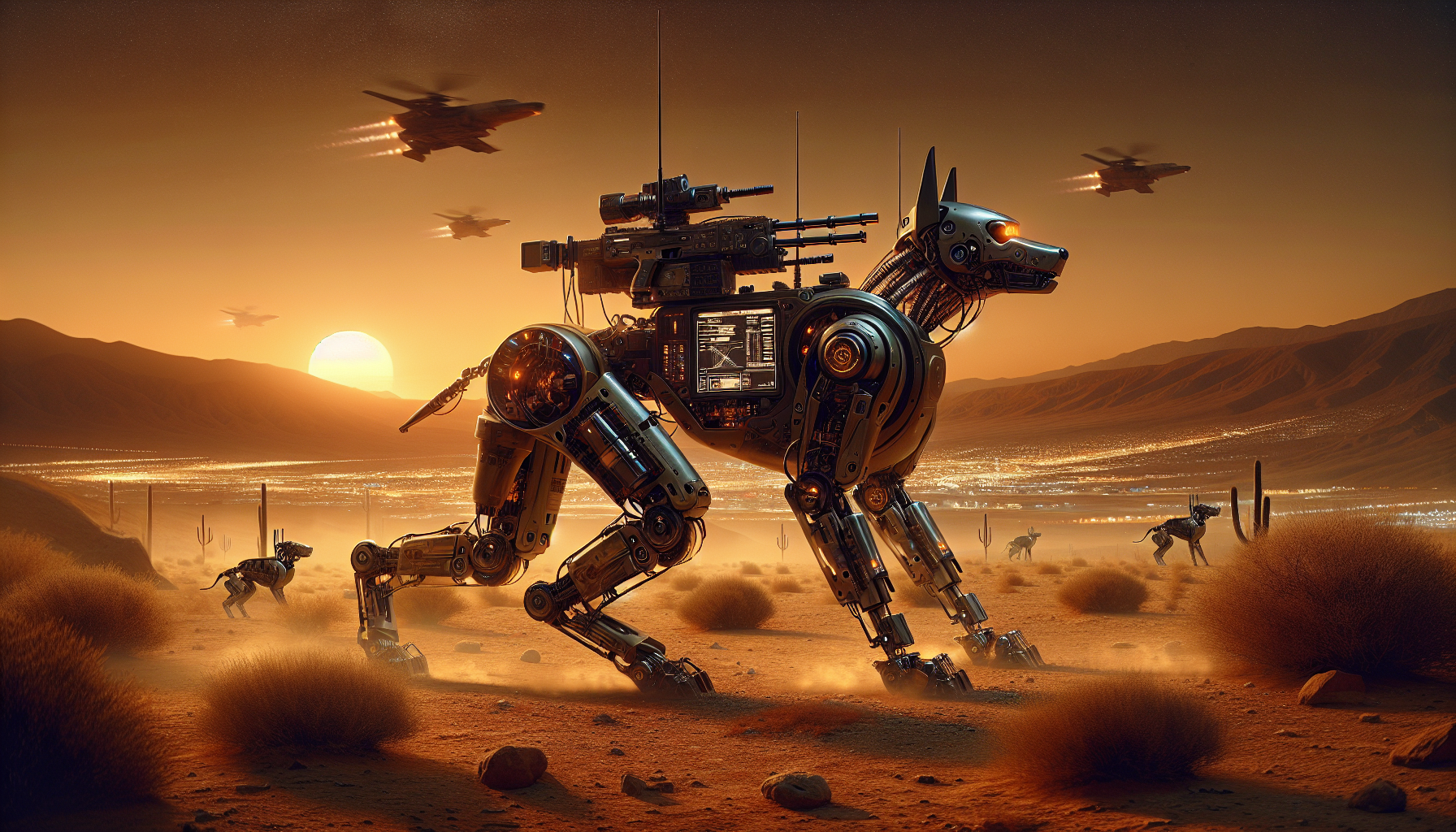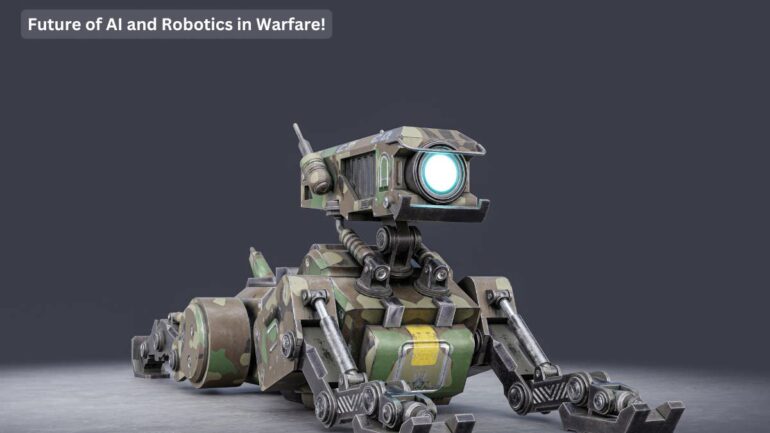- Empty cart.
- Continue Shopping
US Army Deploys AI-Enhanced Killer Robot Dogs with Rifles in Middle East

US Army Deploys AI-Enhanced Killer Robot Dogs with Rifles in Middle East
The future of warfare is rapidly evolving, and the U.S. Army is at the forefront of this transformation. In a groundbreaking move, the military has started deploying AI-enhanced robot dogs equipped with rifles in the Middle East. This development is not only a remarkable leap in military technology but also raises numerous ethical and strategic questions. In this article, we’ll delve into the technical aspects, strategic implications, and the controversies surrounding these robotic canines.
The Technology Behind AI-Enhanced Killer Robot Dogs
The core technology powering these robotic dogs is a combination of Artificial Intelligence (AI), advanced robotics, and precision weaponry. Some key features include:
- AI-guided Decision Making: These robotic dogs are equipped with sophisticated AI systems that allow them to make real-time decisions in complex environments.
- Rifle Integration: The robots are fitted with lethal autonomous weapons systems, capable of precise targeting and execution, raising significant ethical considerations.
- Sensor Technology: With high-definition cameras, night vision, and thermal imaging, these robot dogs can operate effectively in various terrains and light conditions.
Robotics Design and Capabilities of Killer Robot Dogs
The design and mobility of these robot dogs are inspired by biological canines, allowing them to navigate difficult terrains with agility and speed. Some remarkable features include:
- All-Terrain Mobility: Designed to mimic the natural gait of dogs, these robots can traverse sand, rocky terrain, and even stairs.
- Durability: Built with robust materials, they are resistant to harsh weather conditions and rough handling.
- Autonomy and Control: While they can operate autonomously, there is an option for remote control by a human operator, ensuring precision and safety.
Strategic Implications of Deploying Killer Robot Dogs
The deployment of AI-enhanced robot dogs marks a turning point in military strategy and defense mechanisms. Here are some strategic aspects:
Force Multiplier in Combat
As a force multiplier, these killer robot dogs can significantly enhance the effectiveness and efficiency of military operations. They can:
- Operate in High-Risk Areas: Reduce the risk to human soldiers by deploying in areas with high casualty potential.
- Surveillance and Reconnaissance: Provide constant surveillance and relay real-time data to command centers, enhancing situational awareness.
Cost-Effective and Efficient Killer Robot Dogs
While the initial investment in robotic technology is high, in the long run, these killer robot dogs offer a cost-effective solution by:
- Reducing Battlefield Casualties: Saving lives by reducing the need for human presence in direct combat situations.
- Lower Maintenance Costs: Compared to the lifetime costs of training and maintaining human troops.
Ethical and Controversial Aspects
The introduction of armed robotic systems inevitably raises ethical and legal questions. These concerns need to be addressed to ensure responsible use of this technology.
Killer Robot Dogs – Autonomous Lethal Action
One of the primary ethical concerns is the autonomy of these robotic dogs in making life-and-death decisions. Autonomous weapons systems present a moral and ethical challenge due to:
- Potential for Misjudgment: The AI system might misinterpret threats, leading to unintended casualties.
- Lack of Accountability: Unlike human soldiers, attributing accountability in the case of wrongful death or destruction is complex.
Implications for International Law
There is also an ongoing debate about how these systems fit into existing international law frameworks. Key concerns include:
- Compliance with Law of Armed Conflict: Ensuring these robotic systems adhere to international humanitarian laws.
- Global Arms Race: Deployment could spur other nations to accelerate their own autonomous weapon programs.

Future of AI and Robotics in Warfare
The deployment of AI-enhanced robot dogs is a testament to the rapidly accelerating intersection of technology and warfare. Looking ahead, there are several potential developments:
Integration with Human Soldiers
As robotic technology advances, the next step could be seamless integration with human soldiers. This could involve:
- Cooperative Combat Strategies: Human soldiers and robotic units working together to leverage each other’s strengths.
- Enhanced Decision Support: Robots providing real-time data analytics to human commanders for better decision-making.
Advancements in AI Capabilities
The continuous evolution of AI will likely lead to robots with even more advanced capabilities including:
- Natural Language Processing: Allowing robots to understand and respond to verbal commands more effectively.
- Improved Target Recognition: Enhanced image-processing algorithms to better distinguish between friend or foe.
In conclusion, the deployment of AI-enhanced robot dogs equipped with rifles in the Middle East is a significant milestone in military technology. While they offer substantial strategic advantages, it is crucial to address the ethical and legal concerns associated with their use. As technology continues to evolve, these robotic systems will undoubtedly shape the future of warfare.
“`
Unbeatable Pet Accessory Deals on Amazon!
Watch funny and cute dog videos!
Disclaimer:All images featured on this website are either sourced from free-to-use platforms, created by us, or used with permission. If you believe an image on this site violates copyright or your rights, please contact us, and we will address the issue promptly.

















